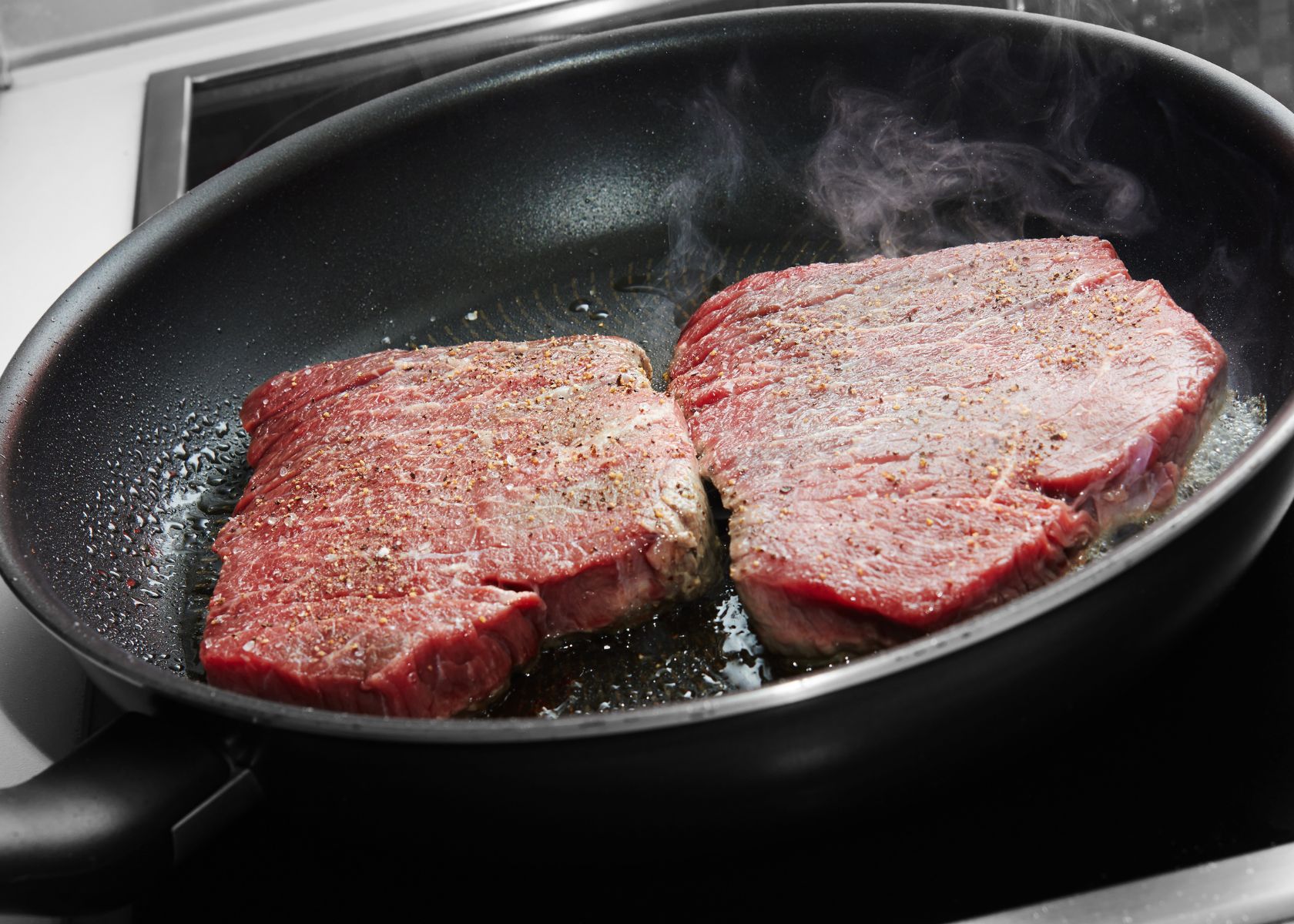Cooking steak involves a mix of art and science, paying attention to details, timing, and technique. Pan-frying is often preferred for its simplicity and the tasty crust it can create. Interested in mastering the frying technique for cooking steak? Continue reading!
This guide aims to assist you in perfecting the skill of cooking steak for a dining experience.
Choosing the Right Cut
The key to preparing a steak lies in choosing the cut. Go for steaks with a meat-to-fat ratio for pan-frying, as fat contributes to retaining juiciness and flavor. Prime ribeye, sirloin, or New York strip are choices known for their tenderness and marbling when cooked.
Best Steaks for Panfrying
types of steaks yield results when sautéed. Here are some popular options;
Ribeye; Renowned for its marbling that enhances juiciness and flavor during cooking.
Sirloin; Provides a balance of flavor and tenderness without the cost of premium cuts.
New York Strip; Contains less fat than ribeye. Remains tender with marbling.
Filet Mignon; While not as flavorful as some cuts, it is exceptionally tender and benefits greatly, from searing in a pan.
Needs When Purchasing Steak
When selecting a steak, choose cuts that have a color with plenty of marbling and creamy fat. Opt for steaks that are 1 to 1½ inches thick to achieve a nicely browned exterior while ensuring they are perfectly cooked inside. These elements are essential when achieving the skill of searing steak.
Necessary Items for Cooking Steak
Tools for searing steaks include a skillet, preferably cast iron, for consistent heat distribution and optimal browning. In addition to the skillet, make sure you have tongs for flipping, a timer, and a meat thermometer on hand to check for doneness. Seasonings like salt and pepper are essential, along with oils with smoke points such as canola or grapeseed oil. To enhance the flavor, consider using herbs like rosemary and thyme, as well as butter and garlic.
Different Pan Sizes
The size of your pan can impact how your steak turns out after cooking on it.
Here are some choices to think about:
A cast-iron skillet is excellent for cooking steak because it evenly spreads heat across the surface, resulting in a sear.
A stainless steel pan is an alternative, to iron; however, you may require oil or butter to prevent sticking.
A nonstick skillet comes in handy when you don’t have other pans available. It’s not the best choice for cooking at high temperatures.
Cooking Tools
Tongs are great for flipping steak without losing its juices.
A meat thermometer is a must-have for cooking steak to your desired level of doneness.
Using a timer can help you keep track of grilling or baking your meat.
A spoon can be used to baste the steak with fat and juices while it cooks.
Key Ingredients
Opt for smoke point oils like avocado or grape seed oil that can withstand temperatures without burning.
Salt and pepper (both salt and ground black pepper) are essential for seasoning your steak.
Enhance the flavor of your steak during cooking with aromatics such as garlic, thyme, and rosemary.
Preparation Before Cooking
Take the steak out of the refrigerator 20 to 30 minutes before cooking to allow it to come to room temperature. This step is crucial for ensuring cooking. Generously season your steak with salt and pepper before cooking; avoid seasoning early as it can make the surface wet by drawing out moisture, which isn’t ideal for searing.
Ensure that your pan is clean and heated over high heat for flavor. The pan should be hot when the steak makes contact with it to achieve a sear.
Cooking Steak
Once the skillet is sufficiently hot, add oil until it shimmers or starts to smoke. Using tongs, carefully place the steak in the pan away, from you to prevent any splattering. For a one-inch steak cooked to rare, each side should be cooked for 3 to 4 minutes; adjust timing as necessary based on how you prefer it done.
It’s best not to move the cooking meat around much; allowing it to stay in one place on the skillet helps develop a crust. Turn it over once one side is nicely browned.
For added flavor, consider adding butter, garlic, or other aromatic ingredients to enhance the smell in your kitchen. Tilt the pan slightly. Spoon the butter and juices over the steaks.
Creating a Crust and Flavor Development
A crust is essential for delicious stovetop steaks. The high heat interacts with proteins and sugars in the meat, resulting in crust formation, through Maillard reactions. Butter adds richness and depth of flavor, especially when combined with herbs and garlic.
Resting Your Steak
After cooking, let the steak rest for 5 to 10 minutes, depending on its size. This resting period helps distribute juices throughout the meat, ensuring every bite is succulent and full of flavor. Ensure the steak stays warm by covering it with foil during the resting period.
Serving Suggestions
When serving, slice the steak against the grain to ensure tenderness. Traditional side dishes could include potatoes, steamed vegetables, or a simple salad. Drizzle some of the pan juices over the meat for an added burst of flavor.
Common Mistakes to Avoid
When cooking steak in a pan, be cautious of errors that could affect your dish.
To achieve searing or steaming temperatures, avoid overcrowding the skillet. Additionally, refrain from flipping and turning the steak frequently; allow one side to develop a crust before flipping.
Advanced Tips and Variations
For those looking to experiment with techniques, consider marinating the steak or trying herb and butter combinations. Adding a splash of wine during cooking can enhance flavors. Elevate the dish.
Conclusion
In conclusion, mastering the art of searing steak requires precision and timing. Even novice chefs can achieve restaurant-quality results by following the steps outlined in this guide. With cuts, seasonings, and methods, you can create your own perfect steak recipe.

